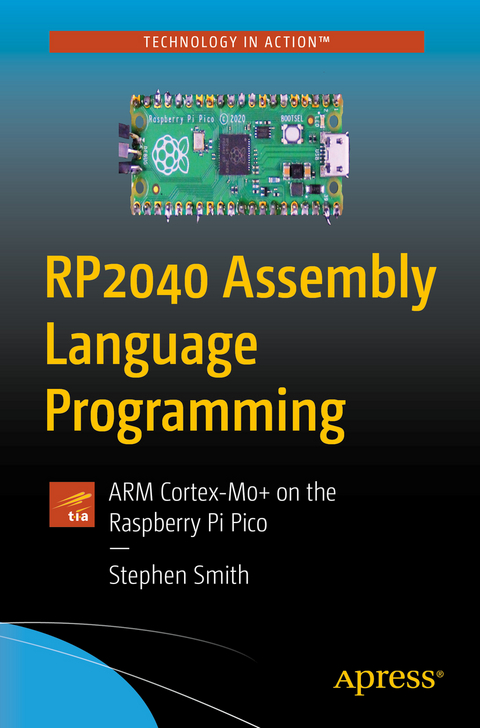
RP2040 Assembly Language Programming
Apress (Verlag)
978-1-4842-7752-2 (ISBN)
There are eight new Programmable I/O (PIO) coprocessors that have their own specialized Assembly Language supporting a wide variety of interface protocols. You'll explore these protocols and write programs or functions in Assembly Language and interface to all the various bundled hardware interfaces. Then go beyond working on your own board and projects to contribute to the official RP2040 SDK. Finally, you'll take your DIY hardware projects to the next level of performance and functionality withmore advanced programming skills.
What You'll Learn
Read and understand the Assembly Language code that is part of the Pico’s SDK
Integrate Assembly Language and C code together into one program
Interface to available options for DIY electronics and IoT projects
Who This Book Is For
Makers who have already worked with microcontrollers, such as the Arduino or Pico, programming in C or Python. Those interested in going deeper and learning how these devices work at a lower level, by learning Assembly Language.
Stephen Smith is a retired Software Architect, located in Gibsons, BC, Canada. He's been developing software since high-school, or way too many years to record. Since retiring he has pursued Artificial Intelligence programming, earned his Advanced HAM Radio License and enjoys mountain biking, hiking, and nature photography. He continues to write his popular technology blog at smist08.wordpress.com.
Chapter 1: How to Set Up the Development Environment.- Chapter 2: Our First Assembly Language Program.- Chapter 3: How to Build and Debug.- Chapter 4: How to Load and Add.- Chapter 5: How to Control Program Flow.- Chapter 6: Thanks for the Memories.- Chapter 7: How to Call Functions and Use the Stack.- Chapter 8: Interacting with C and the SDK.- Chapter 9: How to Program the Built-in Hardware.- Chapter 10: How to Initialize and Interact with Programmable I/O.- Chapter 11: How to Set Up and Catch Interrupts.- Chapter 12: Multiplication, Division, and Floating Point.- Chapter 13: Multiprocessing.- Chapter 14: How to Connect Pico to IoT. Appendix A: ASCII Character Set.- Appendix B: Assembler Directives.- Appendix C: Binary Formats.- Appendix D: The ARM Instruction Set.
| Erscheinungsdatum | 08.11.2021 |
|---|---|
| Zusatzinfo | 19 Illustrations, black and white; XXIII, 320 p. 19 illus. |
| Verlagsort | Berkley |
| Sprache | englisch |
| Maße | 155 x 235 mm |
| Themenwelt | Mathematik / Informatik ► Informatik ► Programmiersprachen / -werkzeuge |
| Informatik ► Weitere Themen ► Hardware | |
| Schlagworte | ARM 32-bit Thumb Assembly Language • ARM Cortex M0+ • Assembly language • Assembly Language Programming • Pico programming • Pico SDK • Raspberry Pi Pico • RP2040 |
| ISBN-10 | 1-4842-7752-X / 148427752X |
| ISBN-13 | 978-1-4842-7752-2 / 9781484277522 |
| Zustand | Neuware |
| Haben Sie eine Frage zum Produkt? |
aus dem Bereich



